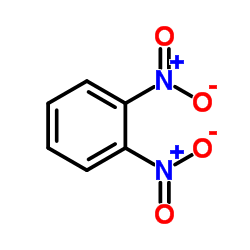Mutagenic reactivities of 3,4-dinitrobiphenyl derivatives.
T Hirayama, H Kusakabe, T Watanabe, M Ono, S Fukui
Index: Mutat. Res. 191(2) , 73-8, (1987)
Full Text: HTML
Abstract
3,4-Dinitrobiphenyl derivatives were mutagenic in Salmonella typhimurium TA98, TA98/1,8-DNP6 and in TA98NR. We describe here the specific reactivity of 3,4-dinitrobiphenyl derivatives with diluted sodium hydroxide solution and the determination of the amounts of released nitrous ion. 3,4-Dinitrobiphenyl derivatives begin to release nitrous ions when treated with NaOH solution at a concentration of 10(-3) N. The behavior of 4NQO and o-dinitrobenzene was the same as that of 3,4-dinitrobiphenyl derivatives. The residues of 3,4-dinitrobiphenyl derivatives, after releasing nitrous ions, were estimated to be hydroxy-nitrobiphenyls, as by GC/MS, we found the formation of o-nitrophenol in the reaction mixture of o-dinitrobenzene with aqueous NaOH solution. 3,4,4'-Trinitrobiphenyl, 3,4,3',4'-tetranitrobiphenyl and 4NQO had reduced mutagenic potency in Salmonella typhimurium TA98 following treatment with diluted NaOH. In order to elucidate the ultimate forms of 3,4-dinitrobiphenyl derivatives, we investigated the reaction of o-dinitrobenzene as a basic model substance of 3,4-dinitrobiphenyl, with nucleic bases in the presence of NaOH in nonaqueous solvent. o-Nitrophenyl guanine and adenine adducts were obtained.
Related Compounds
| Structure | Name/CAS No. | Molecular Formula | Articles |
|---|---|---|---|
 |
1,2-Dinitrobenzene
CAS:528-29-0 |
C6H4N2O4 |
|
Toxicological aspects of photocatalytic degradation of selec...
2015-08-01 [Aquat. Toxicol. 165 , 144-53, (2015)] |
|
Functional characterization of glutathione S-transferases as...
2015-06-01 [Pestic. Biochem. Physiol. 121 , 53-60, (2015)] |
|
Ameliorative action of curcumin in cisplatin-mediated hepato...
2014-08-01 [Arch. Med. Res. 45(6) , 462-8, (2014)] |
|
Reconstitution of TCR alpha-chain expression in deletion mut...
1995-02-15 [J. Immunol. 154(4) , 1551-9, (1995)] |
|
ROD1, a novel gene conferring multiple resistance phenotypes...
1996-02-09 [J. Biol. Chem. 271(6) , 2914-20, (1996)] |